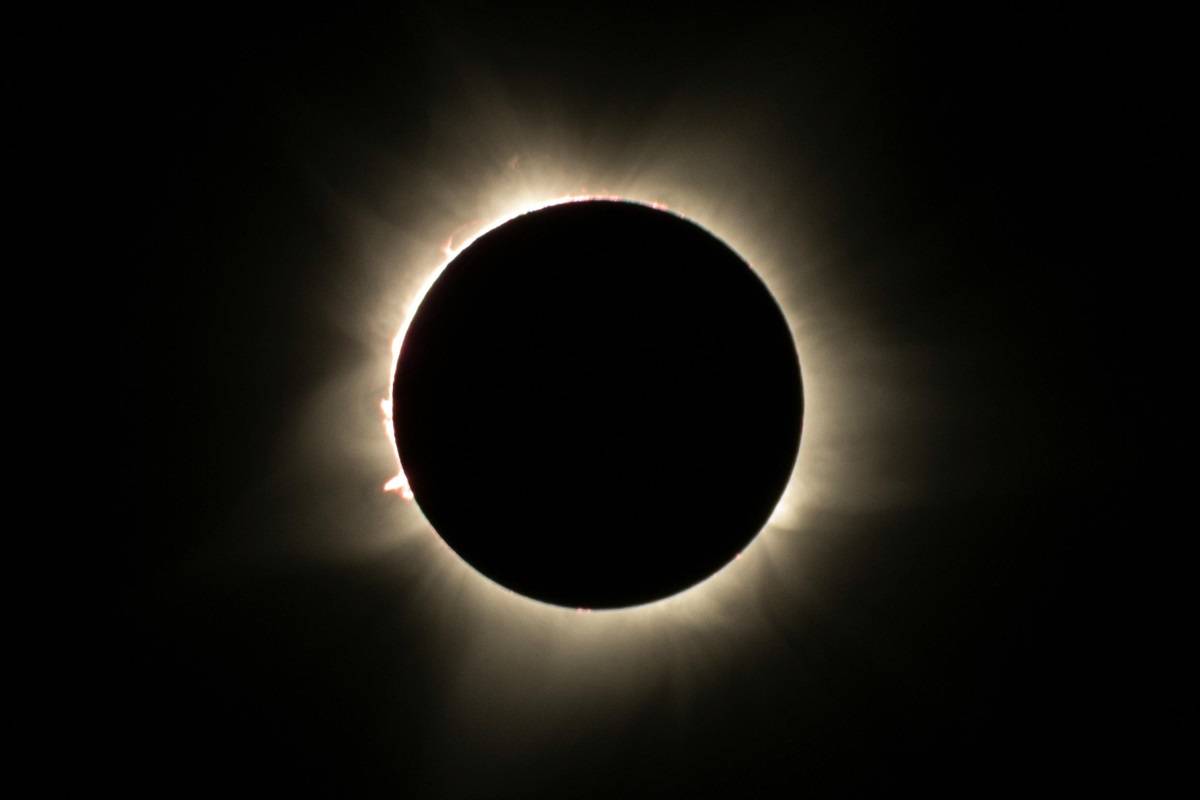
Astronomy enthusiasts are gearing up for an extraordinary celestial event as a total solar eclipse is poised to cast its shadow across North America on April 8, transforming daylight into an captivating darkness. While total eclipses are renowned for their breathtaking spectacle, they remain visible only from select locations, rendering the opportunity to witness one a truly rare occurrence.
What exactly is a solar eclipse? This astronomical phenomenon unfolds when the Moon maneuvers between the Earth and the Sun, obstructing the Sun's radiant light either wholly or partially. As the moon entirely obscures the sun, it casts a shadow on Earth, delineating what scientists refer to as the "path of totality."
This route is a small strip that circles the planet and, if the weather is right, allows viewers inside its boundaries to see a total solar eclipse. When the Moon completely encloses the Sun in its line of totality, the sky changes dramatically, becoming as dark as midnight. But for those who are not in the path of totality, there is just a partial eclipse visible, which is characterized by a minor darkening of the sky based on how much the Moon blocks the Sun's light at that particular place.
Scheduled for April 8, 2024, the total solar eclipse will unfold across a 185-kilometer expanse stretching from Mexico through the United States to Canada. Observers across 18 different states in the US will have the opportunity to witness this celestial phenomenon. Regrettably, the eclipse will not be visible to skywatchers in India.
According to the Indian Standard Time (IST), the eclipse will commence at 9:12 pm on April 8, with totality commencing at 10:08 pm and concluding at 2:22 am on April 9, 2024. The spectacle will commence on the Pacific coast of Mexico at approximately 11:07 am PDT, culminating in Maine around 1:30 pm PDT.
The duration of the total solar eclipse is estimated to span roughly two and a half hours, with totality lasting a mere four minutes. NASA anticipates the peak spectacle to endure for up to 4 minutes and 27 seconds, nearly doubling the duration of the Great American Eclipse of August 21, 2017. Most regions along the path of totality can expect totality durations ranging from 3.5 to 4 minutes.
As the Sun's brilliance poses a risk of retinal damage, spectators are urged to utilize protective eyewear, such as eclipse glasses, during the partial phases of the eclipse. Failure to do so may result in permanent eye damage or blindness.
For those unable to witness the celestial spectacle firsthand, NASA offers a virtual vantage point through its live stream coverage. Commencing on April 8 at 5:00 pm GMT (10:30 pm IST) and continuing until 8:00 pm GMT (1:30 am IST), the live stream will feature expert commentary and telescope views of the eclipse from various locations along its trajectory.















